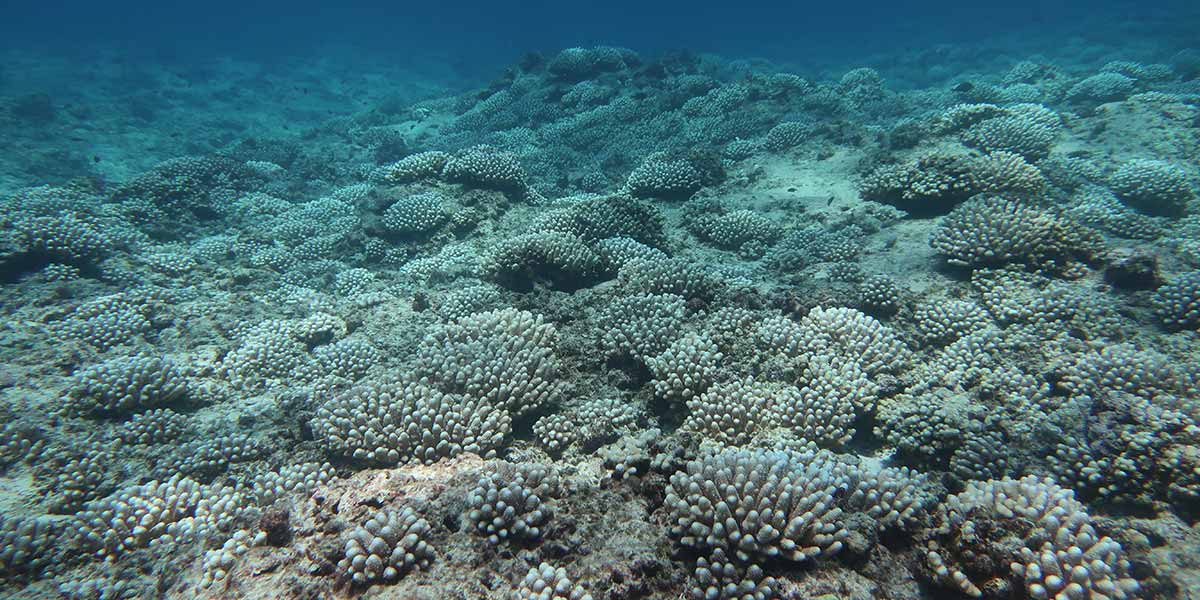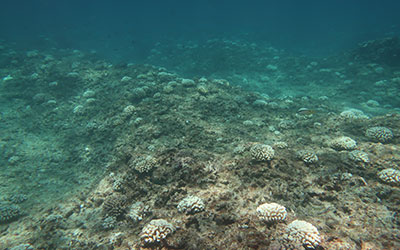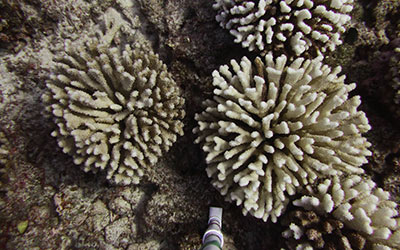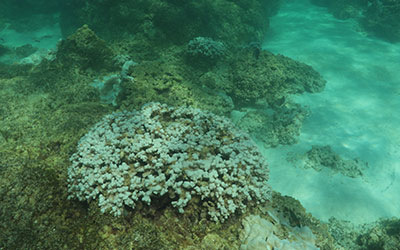News
Coral bleaching observed in Papahānaumokuākea Marine National Monument


Scientists from NOAA’s Pacific Islands Fisheries Science Center (PIFSC) recently monitored coral bleaching in Papahānaumokuākea Marine National Monument as part of the Hawaiian Archipelago Reef Assessment and Monitoring Program cruise on NOAA Ship Rainier August 25 - September 8. These observations show that bleaching affects the entire archipelago.
Coral bleaching occurs when corals experience high temperatures and light and the symbiotic algae within leave the coral animal. If coral remain bleached for a prolonged time, the coral animal may die.
PIFSC scientists conducted rapid visual bleaching assessments at French Frigate Shoals, Lisianski Island, Pearl and Hermes Atoll (part of the Hawaiian Islands National Wildlife Refuge), and Kure Atoll to monitor the extent of bleaching in the monument. Some observations include:

- At the time of PIFSC surveys, the Northwestern Hawaiian Islands region was under NOAA Coral Reef Watch bleaching alert II. Conditions are expected to cause widespread coral bleaching and mortality.
- Mild to severe bleaching was observed at all four islands surveyed.
- The percent of live coral cover that was bleached was highest at Kure Atoll and Pearl and Hermes Atoll, where temperature anomalies have been warmer than most of the southern islands over the past month.
- At French Frigate Shoals, Pearl and Hermes Atoll, and Kure Atoll, bleaching was generally more severe in shallower coral communities than in deeper reefs.
- Consistent with previous bleaching events, Pocillopora and Montipora were the most susceptible to bleaching. (see photos.)
Additionally, there are separate reports of coral bleaching occurring at Midway Atoll National Wildlife Refuge and Battle of Midway National Memorial, which brings the total number of confirmed locations in the monument to five.

The bleaching event in Papahānaumokuākea Marine National Monument is part of a regional marine heat wave that has been linked with the formation of “the Blob” (a large mass of relatively warm water) in the Northern Pacific. This heatwave has also affected the main Hawaiian Islands, currently also under a bleaching alert. Bleaching has already been observed across the main Hawaiian Islands, and are predicted to continue to worsen until early November.
Mass coral bleaching was last observed in Papahānaumokuākea in 2014, which until this year was the most widespread and severe coral bleaching event in the monument. The 2014 coral bleaching led to a die off of corals in some locations in the monument. This year, temperatures exceeded the bleaching threshold three weeks earlier than in 2014 and are on track to surpass the maximum anomalies measured during the 2014 event.
The latest NOAA Coral Reef Watch bleaching alerts for the Hawaiian Archipelago (including Papahānaumokuākea) can be seen here.
View the Coral Reef Watch Pacific Climate Update here.
The State of Hawaii and our partners are requesting that ocean users consider actions that will support coral health during times of stress. These can be found on DAR’s website. Also, please report sightings of coral bleaching in the Main Hawaiian Islands here.


